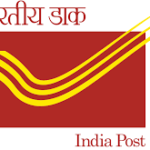Full Details of Parcel Network Optimization Project (PNOP) – Study Materials for Postal Exams
The full form of the PNOP is Parcel Network Optimization Project. It is a project started by the Department of Posts on 17.08.2018.
The main aim of the PNOP India Post project is to establish a network between all Parcel Hubs of the Department of Post in India.
PNOP was undertaken by the Department of Posts to streamline parcel operations to make them predictable, reliable, and efficient by standardization in the processes across the country so that all parcel sorting centers function in the same manner as consistency in operations ensures better monitoring and reporting.
These Parcel Hubs are categories as per L1 and L2. There are 57 L1 Parcel Hubs and 137 L2 Parcel Hubs available in India as per PNOP Project.
L1 Parcel Hub will close bags to all other L1 Parcel Hubs of the country and for L2 Parcel Hubs within the circle and delivery post office mapped with L1 Parcel hub.
The post office mapped with the L1 or L2 parcel hub will prepare two separate bags. i.e. TD and NTD bag as per the PNOP project of India Post.
Required Operational area for a parcel hub as per PNOP
- Up to 500 parcels processed in a parcel hub in a shift/set is called a very small category and it should have 500 sqr feet operational area.
- 500 to 1500 parcels processed in a parcel hub in a shift/set is called a small category and it should have 1500 sqr feet operational area.
- 1500 to 3000 parcels processed in a parcel hub in a shift/set is called a medium category and it should have 3000 sqr feet operational area.
- 3000 to 8400 parcels processed in a parcel hub in a shift/set is called a large category and it should have 8456 sqr feet operational area.
Retail Booking of Parcel as per PNOP
- Customers to provide Self-Declaration of Parcel content.
- Parcel details are to be captured in the system.
- Complete the recipient address to be entered.
- Value of parcel to be entered for commercial shipments.
- Parcel dimensions are to be measured and entered.
- IP-enabled weighing machine to be used wherever applicable for weighing parcels.
- Chargeable weight is calculated by the system.
- Parcel-related documents are to be placed in a pouch to be pasted on each parcel.
- System-generated routing information to be pasted on the parcel
- Parcels are to be segregated by mode of shipment (Air/Surface) and further segregated by TD/ NTD.
- Use of sure lock to seal parcel bags in POS system upon scanning of barcode on sure lock.
- Automated transfer of bag manifest (bag level parcel details) from POS to Speed Net/Parcel Net now CSI SAP/Backoffice.
Sorting Work as per Parcel Network Optimization Project
- Parcels pick up scans at customer locations using SIM-based remote scanners.
- Scanning of all parcels/bags at the time of unloading from vehicles.
- The program assisted in the sorting of the article based on the article’s pin code.
- Pin code data entry for parcels in which data is not available.
- DWS/SWS machine to be used to find a chargeable weight for e-commerce parcels.
- Direct bagging of large parcels to last-mile delivery center.
- Separate area for processing return parcels.
- Returned article sorted with other articles once returns processing is done.
- Bags are closed using a barcoded sure lock tightened, bag weighed, routing label is printed using a thermal printer & to be pasted on the sure lock flap.
- System-generated Delivery Bill for destination facility.
- Automated transfer of Delivery Bill to the destination facility.
- Bag level expectancy is created at the destination facility.
- Automated reconciliation of bags and parcels upon receipt at PO.
- Data to be entered for parcels for which data is not available.
- Sorting for delivery.
- Primary sorting of parcels into areas.
- Secondary sorting of parcels beat-wise for each area.
- All parcel products are to be sorted together for one beat.
- Parcels scanned and kept in bag sequentially as per stops in each beat
- Delivery slip printed containing all info pre-printed – tracking ID, product type, COD amount/any other collectible amount (customs duty), full address of the consignee, consignee contact
- number (Mobile).
- Delivery slip-on Mobile phone/ handset for postmen.
- Daily system-generated “Reattempt List” report.
- Secured cage to hold undelivered parcels.
Parcel Delivery as per PNOP
- System generated “Out for Delivery” message sent to the consignee.
- Delivery status update.
- Successful deliveries are updated on the Delivery Slip / Mobile app & consignee’s signature is taken.
- Non-delivery updated on physical Delivery Slip/ Mobile App, Pre-printed labeled sticker pasted on the parcel next to address label denoting reason of non-delivery.
- Non-delivery reasons are updated in the system by scanning the parcel bar code of all undelivered parcels.
- Reattempt date to be updated in the system.
- Consignee/ shipper to be contacted in incorrect/incomplete delivery address.
- System-generated COD list with beat-wise cash collected against each COD parcel delivered.
- Daily “Parcel On-Hold” Inventory Reconciliation Scan – system prompts parcels due for return.
- “RTS” Scan for return articles to reverse Origin and Destination in the system.
- Return parcels bagged together with forwarding parcels & sent to the mapped processing center.
Parcel Processing strategy at Parcel Hubs as per PNOP
- End-to-End Security.
- Pilferage/abstraction – a major challenge in Parcel Operation.
- Poor quality of bags and seals.
- Need for securing processing hubs.
- End-to-end scan information including transit – TMOs/Sections
- Specifications of new improved bags and plastic seal finalized.
- Procurement of bags and secure plastic seals.
- Development of Inventory management for bag accounting.
- CCTV, access control protocol – to be implemented as part of PNOP.
- Secure packaging options for parcels at POs & e-com booking centers.
- Scanning of bags at Sections/Railway platforms –for bag reconciliation.
What is the PNOP Dashboard?
PNOP Dashboard is an online dashboard developed by CEPT, Mysore for better monitoring of the PNOP project activities by the Parcel Directorate.
The main purpose of this dashboard is to Monitor the Civil works of all parcel hubs, procurement of standardized equipment for parcel hubs operationalization of Parcel Hubs, and Nodal Delivery Centres(NDC).
The Dashboard is actually updated by the Circles or Divisions regularly on day to day basis and it is monitored by the Directorate. Here I am also sharing the link to PNOP Dashboard for your quick reference.
The above PNOP India Post Dashboard for PNOP IndiaPost works in Sify as well as broadband by using a user ID and password shared to the Circles/Regions.
Further, PNOP Dashboard has the option to update RTN (Road Transport Network) movements. The Directorate will be monitoring the stage-wise movements of RTNs, whether they are adhering to the time, schedule, etc.
Norms as per PNOP
Here I am sharing the norms as per the PNOP project. Kindly check below all the norms of PNOP.
- 1. Bagging- 1 minute per bag
- 2. (i) Parcel Bag Dispatch scan & (ii) Parcel bag facility in-scan 4 Bags per minute
- 3. (i) Parcel SWS Weighment & (ii) Parcel exception scan- 6 parcels per minute
- 4. Booking Parcels- 48 parcels per hour
- 5. Sorting & bagging at a mixed station- 150 parcels per hour
- 6. (i) when Parcel bag opening, parcel receipt scan & primary sorting activity is done at the bag opening table & (ii) Bag opening, parcel scanning, and sector sorting & (iii) Secondary sorting of parcels & bagging- 250 parcels per hour
- 7. Parcel bag opening as per PNOP concept when only bag opening & parcel receipt scan activity is done at the bag opening table- 350 parcels per hour
- 8. Sorting of bags for post-sort staging- 360 Bags per hour
- 9. Primary sorting of parcels- 700 parcels per hour
- 10. Parcel facility in-scan- 720 parcels per hour
- 11. Parcel feeding on an automated sorter- 1200 parcels per hour
Conclusion
PNOP (Parcel Network Optimization Project) is now successfully implemented all over India. All parcel hubs are working as per the PNOP concept.



